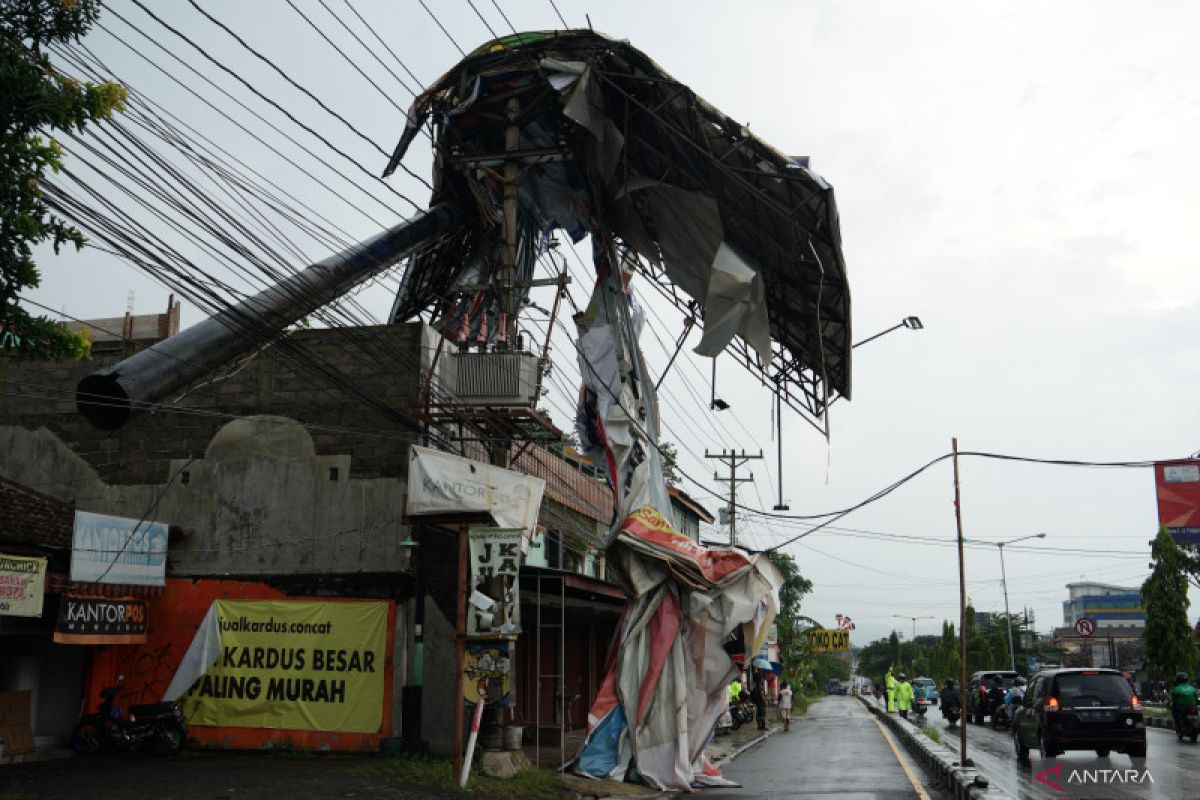The strong winds are sometimes accompanied by moderate to heavy rains.
"From the analysis of the latest atmospheric dynamics in the last few days, the formation of cumulonimbus clouds is quite intensive, especially in the western and southern parts of Java. The cloud formation occurs quite massively in the afternoon until the evening during which the convection process in the ocean is quite dominant," BMKG Weather Forecast and Early Warning Coordinator Miming Saepudin noted in a written statement received by ANTARA here on Saturday.
Saepudin remarked that in the next week, the likelihood of cumulonimbus cloud growth was still quite high, including in central and southern Sumatra; west coast of Sumatra; most of Java, West Nusa Tenggara, and East Nusa Tenggara; and northern and eastern Kalimantan.
Head of the BMKG Weather Early Warning Sub Division, Agie Wandala, remarked that wind formation was chiefly caused by the difference in air pressure at the two locations. This pressure difference generally occurs due to temperature differences.
The difference in the sea and land temperatures causes a pressure difference that triggers wind flow. The greater the pressure difference, the stronger is the wind generated, which generally occurs at the surface.
"In addition to the large air pressure difference, strong winds can be generated by the cumulonimbus cloud itself. Strong winds from this cumulonimbus cloud can be in the form of a tornado and also strong winds that are commonly called downbursts," he remarked.
He explained that a downburst occurs when a mass of air cools and begins to sink, picking up a lot of air quickly, and spreading as it reaches the ground whilst gaining speed to produce winds reaching up to 160 kilometers per hour.
The wind speed in the downburst can cause casualties, fallen trees, and damage to building structures, in addition to triggering a plane crash during landing.
In early February, the phenomenon of destructive strong winds occurred in several parts of Indonesia, such as Subang District in West Java, Purbalingga and Cilacap districts in Central Java, Sleman and Bantul districts in Yogyakarta, and Bantaeng District in South Sulawesi. Strong winds had claimed one life in Banjar City of West Java.
Related news: Poor building designs reflect lack of disaster preparedness: BMKG
Related news: SE Sulawesi's five districts projected to receive heavy rains: BMKG
Related news: BMKG warns of coastal flooding in southern coasts of W Java
Translator: Katriana
Editor: Sri Haryati
Copyright © ANTARA 2022









